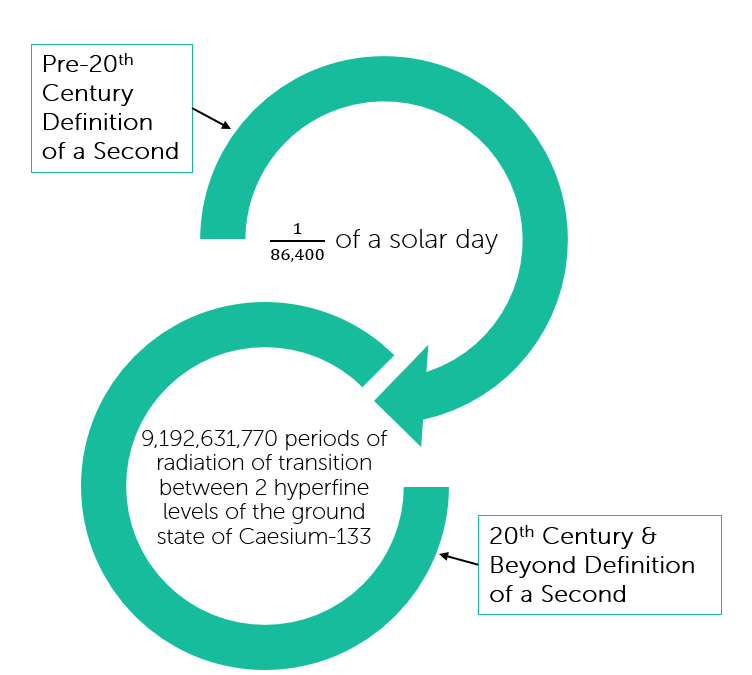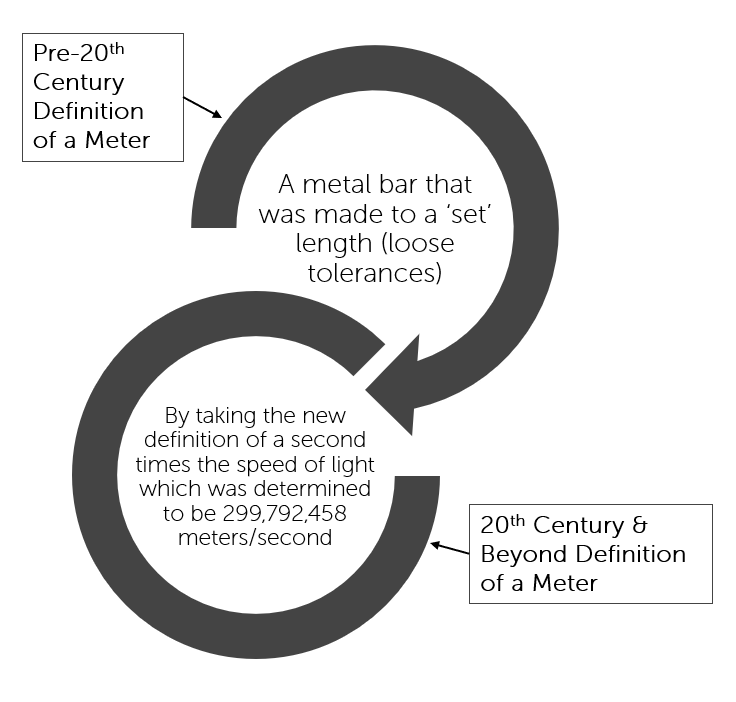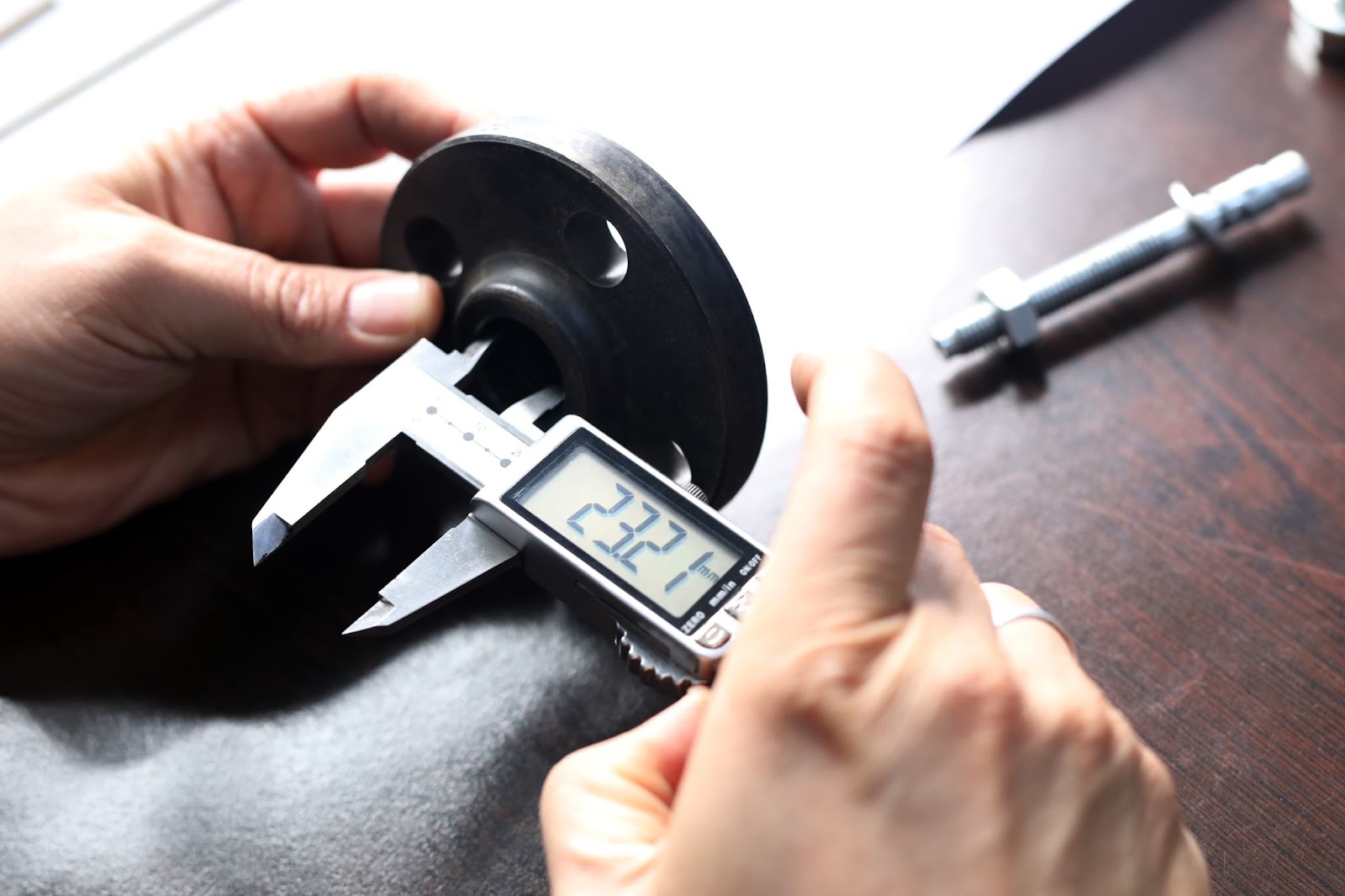Time to read: 5 min
In a broad sense, metrology is the scientific study of measurement. Metrology encompasses both experimental and theoretical measurements, at any given uncertainty, for any field in STEM. And dimensional metrology is one of the main pillars of quality measurement systems in a manufacturing facility. Dimensional metrology is utilized to determine if parts are the correct size, per the engineering drawing dimensions, for their application.
While you may utilize metrology on a daily basis or even interact with a metrology or ‘met’ lab, you may not know the origin of the word and all that the subject entails. Read on to learn more about the history, types, and applications of metrology.
History of Metrology
Before the 1790s AD, there were several thousand types of measurement systems utilized throughout Europe. As you can imagine, this variance in measurement systems and devices caused problems, as it left room for fraud and extortion. Early attempts to create a standard measurement system were unsuccessful — like that of philosopher John Wilkins of 17th century England, who used a swinging pendulum with a set period to define a meter.
But then the French Revolutionary government introduced the metric system in 1795. The metric system was based on the definition of a meter being 110,000,000 of the distance between the Paris-equator-meridian and the North Pole. This system was based on logical and abstract mathematical reasoning and utilized simple-to-understand decimal fractions. The definition of a meter has changed since 1795, but its roots are still evident in the modern metric system (known as the International System of Units or the SI system of measurement).
However, the English-speaking world didn’t adopt the metric system due, in part, to their opposition to the French Revolutionary/Napoleonic regimes. In 1875, the United States, along with other major world powers of the time, signed the Treaty of the Metre. This treaty solidified worldwide recognition of the metric system as the official international measurement standard.
It also brought about the creation of the first international metrology organization, the International Bureau of Weights and Measures (BIPM). The main purpose of the BIPM was to oversee the distribution and accuracy of the measurement standards for units of measure such as a meter and kilogram. The standards were then referred to as prototypes and the organization solidified the field of metrology.
Even so, the English-speaking world refused to adopt the metric system as its primary system of measurement. The British Empire and the United States chose a system of measurement standardized in 1824 instead — the English unit system of metrology. Eventually, the English system was standardized using conversions from the metric system (like the inch being equivalent to 2.54 centimeters).
As technological advances of the 20th century took hold, the precision of our measuring system references improved, as did the field of metrology. Take a look at how the 20th century improved measurement standards for the metric system:


Modern Metrology: Three Subfields
Now that we understand the history of metrology, we can examine the field of modern metrology. What most consider to be modern metrology falls into three categories or subfields:
- Scientific metrology
- Legal metrology
- Applied metrology
Let’s take a closer look at each.

Scientific Metrology
Scientific metrology lays the groundwork for all other types of metrology, which is why it’s also known as fundamental metrology. Scientific metrology focuses on five main tasks:
- The development of new measurement units
- The development of measurement unit systems
- The development of measurement methods
- The creation and maintenance of measurement standards
- The transfer of measurement standards to users
The organization responsible for international scientific metrology is the National Metrology Institutes (NMI), along with coordination by the International Bureau of Weights and Measurements (BIPM).
Legal Metrology
Legal metrology is a specific subset of metrology that legally protects consumers, protects the environment, and ensures fair trade practices. This subfield of metrology is a result of the need to combat fraud and extortion. It focuses on determining and upholding regulatory/legal requirements for measurements and measurement systems. Everyone in the world around us makes daily decisions based on the results of various measurements. Legal metrology ensures that the results of the measurements are transparent and accurate. To this end, legal metrology focuses on the following:
- The establishment of laws surrounding metrology
- Supervision and accountability for ensuring the laws are followed
- Supplying traceability for measurements and measuring instrumentation
- Actively reducing transaction costs and disputes that arise due to incorrect measurements or fraud
- Reducing the potential for unfair practices around trade
Legal metrology works in conjunction with scientific and applied metrology to support the physical application of measurements in society.
Applied Metrology
Applied metrology is also known as industrial metrology. Applied metrology covers the application of measurement to manufacturing or other industrial processes, and their utilization in society. It also ensures measurement systems are suitable, calibrated and under quality control. This is the subfield of metrology focused on ensuring the correct functioning of measurement systems.
Applied metrology seeks to ensure product conformity to the engineering requirements, regulatory standards, customer requirements and legal requirements (to name a few). Measurement conformity is a critical foundation for running every business and ensuring your quality guarantees are accurate. Industrial metrology seeks to ensure that products and production processes are accurate and precisely made or utilized, according to requirements.
Industrial metrology, or metrology in manufacturing, is an ever-evolving field with new, ongoing technological advancements. The field has focused on utilizing technology to facilitate faster, more accurate and more efficient measurement techniques in the industrial sector. Some examples of these technological advancements in measuring techniques and measuring equipment include:
Computer Tomography (CT) scanning, which allows metrologists and metallurgists alike to see the entire part in one view (internal cavities and part walls). This allows for defects like voids, porosity, or surface imperfections to be detected rapidly. This innovative repurposing of an existing technology to perform complex manufacturing metrology measurements eliminates the need for other cumbersome measurement techniques like electromagnetic testing, fluorescent penetrant inspection (FPI), destructive testing, and visual inspection.
Coordinate Measuring Machines (CMM) enable rapid, accurate and precise measurement in a fraction of the time manual measurements take. The technology utilizes a probe that makes contact with the surface and calculates distance measurements based off the contacting coordinates.
Industrial metrology focuses on improving the following aspects of measuring technology:
- Accuracy
- Measuring speed
- Automation in measurement
- Utilizing software to improve data acquisition speed and analytics
- Reducing cost of measurements (focus on reducing labor)

Main Takeaways
Metrology is a scientific field that focuses on the following:
- Measurement systems
- Measurement units
- Data integrity and accuracy
- Measurement uncertainty
- Assurance of measurements
- Traceability of measurements to calibrated standards and equipment
- Basic statistics of measurements
- Incorporating metrology into a lab or company Quality Management System
- Calibration/certification of equipment and measuring standards
Metrology is an ever-growing scientific field that is bigger than meets the eye. Metrology is an unseen foundation of our society that affects millions of decisions made on a daily basis. That’s why the field of metrology will continue to be a focus for companies, society and governments alike.
Sourcing Simplified – Start Your Next Project With Fictiv
If you’re looking for a partner to provide you with accurate measurement results and manufacture your products to your exact requirements every time — regardless of tight tolerances or part complexity — then look no further. Fictiv has what you need.
Fictiv is your operating system for custom manufacturing that makes part procurement faster, easier, and more efficient. In other words, Fictiv lets engineers, like you, engineer.








